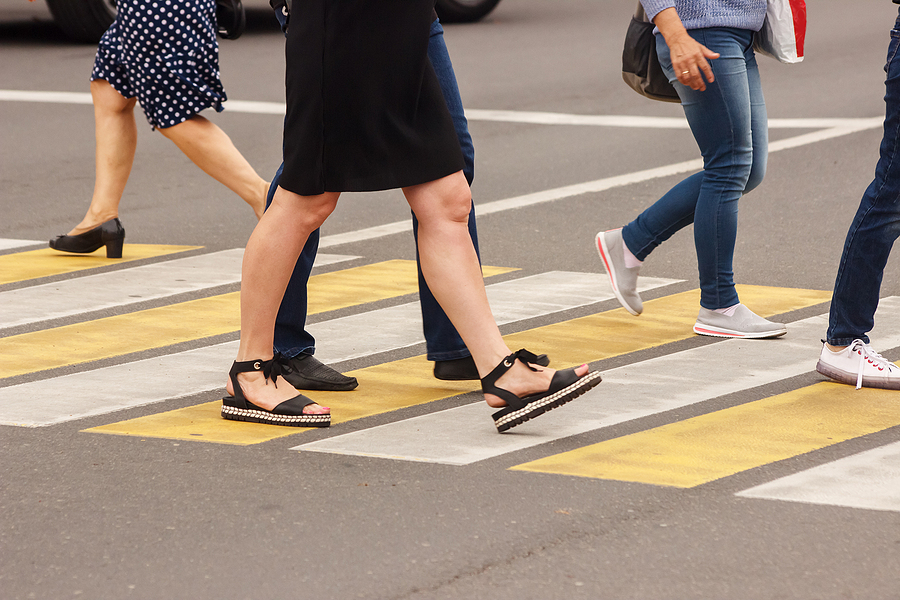Leading Pedestrian Interval System: An Innovative Step Towards Safer Intersections in Tampa
 Michael Babboni
Personal Injury
Michael Babboni
Personal Injury
As a personal injury lawyer in Saint Petersburg, I'm consistently in the pursuit of safety improvements for our community. One issue we grapple with at signalized intersections is the risk posed to pedestrians from right- and left-turning vehicles during the WALK interval. Unfortunately, data confirms that pedestrians are at a high risk of accidents involving left-turning vehicles.
A conventional intersection gives the WALK signal to pedestrians three seconds before parallel traffic gets the green light. The question, then, is how can we enhance the safety of these interactions? The answer may lie in an innovative traffic mechanism - the Leading Pedestrian Interval (LPI).
Studies reveal that by separating pedestrians and vehicles in time, LPIs significantly reduce vehicle-pedestrian conflicts and increase the instances where motorists yield the right-of-way to pedestrians. I want to share the results of a detailed study conducted in St. Petersburg, Florida, on the impact of a three-second LPI.
Study on the Impact of Leading Pedestrian Intervals
The study was conducted across three downtown intersections that, on average, witnessed 60 pedestrian crossings per hour. To maintain objectivity, no public awareness activities were conducted before the study. This project, funded by the Insurance Institute for Highway Safety at a cost of $30,000, aimed to examine the effects of LPIs on pedestrian behavior and conflicts with turning vehicles.
Before the introduction of LPIs, the intersections followed a standard configuration, providing the WALK signal and GREEN phase for turning vehicles simultaneously. The introduction of LPIs meant that pedestrians were released three seconds before turning vehicles. Key factors like pedestrian-vehicle conflicts, the number of pedestrians crossing at the start of the WALK interval, and the number of pedestrians crossing during the remainder of the WALK interval were monitored. Researchers also tracked the percentage of pedestrians yielding to turning vehicles and the number of lanes crossed by pedestrians during the three-second LPI.
The results were remarkable. The introduction of the LPI almost eliminated conflicts for pedestrians departing at the start of the WALK interval. Prior to the LPI implementation, each observation period averaged two to three conflicts per 100 pedestrians, with some periods witnessing up to five conflicts. Post-implementation, 34 of the 41 sessions had no conflicts, and no session reported more than two conflicts per 100 pedestrians.
This effect was consistent across all age groups, including seniors. Moreover, conflicts also decreased during the remainder of the WALK interval, likely due to pedestrians establishing their presence early in the crossing. As pedestrians became familiar with the LPI system, their crossing habits evolved to take full advantage of the system.
After four months, no decrease in intersection efficiency for motor vehicles was detected, and local authorities chose to retain the LPIs. This reaffirms the effectiveness of LPIs in not only increasing pedestrian safety but also enhancing pedestrian comfort and perceived safety.
How Does LPI Work?
An LPI increases the visibility of pedestrians in the crosswalk and reinforces their right-of-way over turning vehicles. It typically gives pedestrians a 3-7 second head start before vehicle traffic gets the green light. This advantage allows pedestrians to establish their presence in the intersection and makes them more visible to motorists, especially those intending to turn.
Seemingly minor, these few seconds have a significant impact on safety, as confirmed by the Federal Highway Administration (FHA):
- It gives pedestrians a clear window to indicate their intent to cross, making them more visible to motorists.
- The delay increases the likelihood of drivers yielding to pedestrians already established in the crosswalk.
- Those using mobility devices, such as wheelchairs, walkers, or canes, are given additional time to enter the intersection and become noticeable to drivers.
By the end of 2023, Tampa plans to incorporate LPI walk signals into every intersection across the city, bringing the safety benefits of this system to all pedestrians.
Impact on Motorists
While the LPI system introduces a minor delay for vehicles entering an intersection, it's typically inconspicuous to drivers, cyclists, and pedestrians. The full implementation of LPI is projected to reduce the number of accidents involving pedestrians and cyclists, potentially reducing pedestrian-vehicle collision rates by up to 20%.
Remember, everyone becomes a pedestrian at some point. Whether you're a driver, a cyclist, or a pedestrian, safer streets benefit us all.
Improving Driving Habits for Pedestrian Safety
We can contribute to safer roads by adapting our driving behaviors:
- Always stay vigilant for cyclists and pedestrians.
- Reduce speed and exercise extra caution during poor weather or nighttime conditions.
- Always yield to pedestrians in crosswalks.
- Do not overtake vehicles stopped at a crosswalk.
- Avoid driving under the influence of drugs or alcohol.
- Approach crosswalks cautiously in case a pedestrian is slow to enter.
- Check behind your vehicle before backing up to ensure it's clear.
Pedestrians and cyclists also have a responsibility to maintain safety. Always use crosswalks, engage the walk signal where available, and be vigilant of approaching and turning vehicles.
By understanding the role of innovative systems like the LPI and adapting our behaviors, we can make our streets safer for all. As a personal injury attorney in Saint Petersburg, I'm committed to advocating for such safety measures and supporting those who've been unfortunately affected by pedestrian accidents.
The Impact of LPI on Pedestrian Safety
Several studies have demonstrated the benefits of LPIs. According to the Federal Highway Administration, LPIs can reduce pedestrian-vehicle collisions by as much as 60%. These are substantial figures that underscore the potential of LPIs in preventing accidents and ensuring the safety of pedestrians.
What to Do in Case of an Accident
Stay safe, and remember: the advent of systems like the LPI demonstrates our city's commitment to improving road safety. Let's do our part by staying alert, respecting traffic signals, and looking out for each other, whether we're behind the wheel or on foot.
